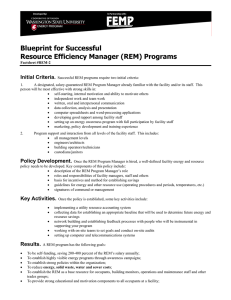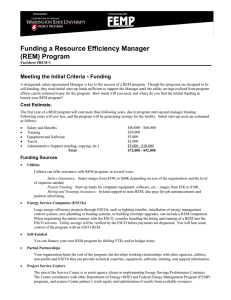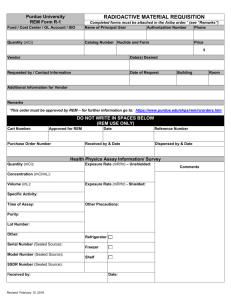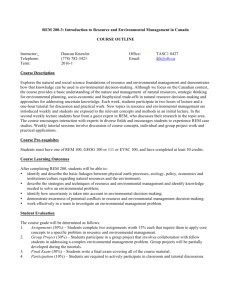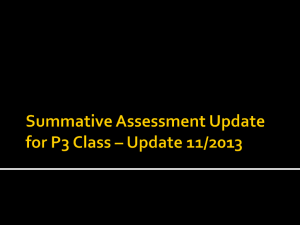Introduction to Resource Efficiency Manager (REM) Programs History
advertisement
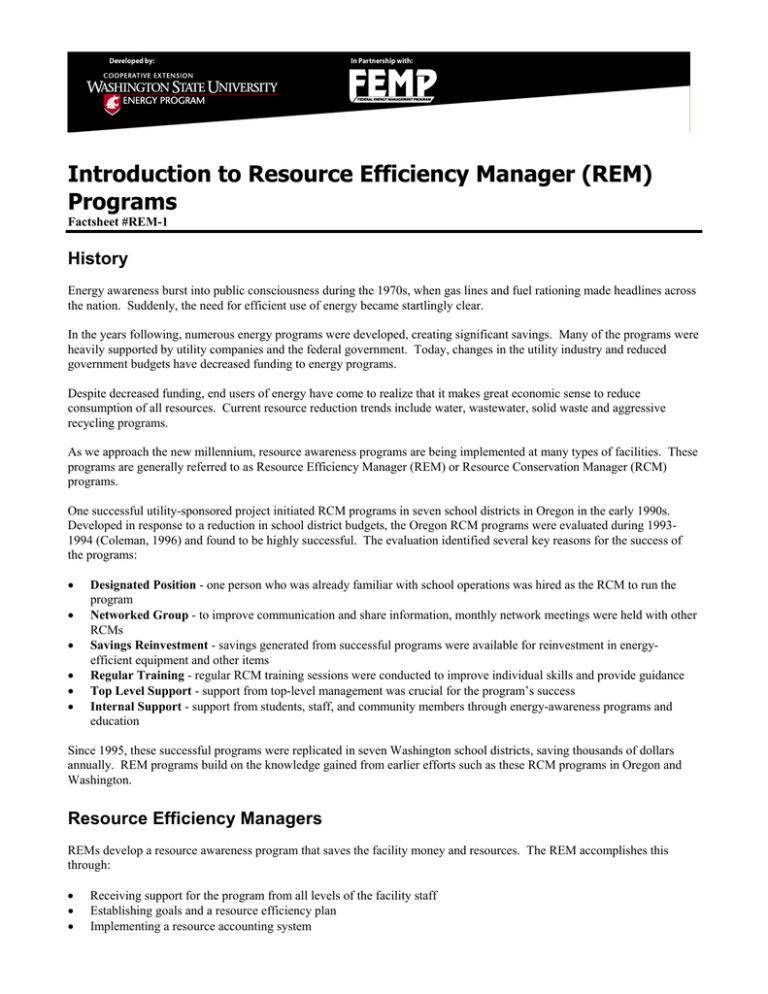
Introduction to Resource Efficiency Manager (REM) Programs Factsheet #REM-1 History Energy awareness burst into public consciousness during the 1970s, when gas lines and fuel rationing made headlines across the nation. Suddenly, the need for efficient use of energy became startlingly clear. In the years following, numerous energy programs were developed, creating significant savings. Many of the programs were heavily supported by utility companies and the federal government. Today, changes in the utility industry and reduced government budgets have decreased funding to energy programs. Despite decreased funding, end users of energy have come to realize that it makes great economic sense to reduce consumption of all resources. Current resource reduction trends include water, wastewater, solid waste and aggressive recycling programs. As we approach the new millennium, resource awareness programs are being implemented at many types of facilities. These programs are generally referred to as Resource Efficiency Manager (REM) or Resource Conservation Manager (RCM) programs. One successful utility-sponsored project initiated RCM programs in seven school districts in Oregon in the early 1990s. Developed in response to a reduction in school district budgets, the Oregon RCM programs were evaluated during 19931994 (Coleman, 1996) and found to be highly successful. The evaluation identified several key reasons for the success of the programs: • • • • • • Designated Position - one person who was already familiar with school operations was hired as the RCM to run the program Networked Group - to improve communication and share information, monthly network meetings were held with other RCMs Savings Reinvestment - savings generated from successful programs were available for reinvestment in energyefficient equipment and other items Regular Training - regular RCM training sessions were conducted to improve individual skills and provide guidance Top Level Support - support from top-level management was crucial for the program’s success Internal Support - support from students, staff, and community members through energy-awareness programs and education Since 1995, these successful programs were replicated in seven Washington school districts, saving thousands of dollars annually. REM programs build on the knowledge gained from earlier efforts such as these RCM programs in Oregon and Washington. Resource Efficiency Managers REMs develop a resource awareness program that saves the facility money and resources. The REM accomplishes this through: • • • Receiving support for the program from all levels of the facility staff Establishing goals and a resource efficiency plan Implementing a resource accounting system • • Conducting facility operation surveys and on-site audits Initiating a resource awareness program The REM encourages everyone using the facility to participate in efficient resource use practices. Studies have repeatedly shown that behavior changes alone can save more dollars than many typical energy-efficient technologies. The Washington State University (WSU) Cooperative Extension Energy Program Role for Resource Efficiency Manager Programs WSU Energy Program has immediate access to a wide range of energy and resource information from these service areas: WSU Energy Program can help provide the information, training and support necessary to save money and resources through efficient resource management at large private and public facilities, with an emphasis on federal facilities. WSU Energy Program produces and distributes information to start and operate highly effective, selffunding resource awareness programs. (see Factsheet #REM-4: “Gaining Lateral and Horizontal REM Program Support”). • • • • • • • • Energy Ideas Clearinghouse Renewable and Alternative Resources Industrial Services Education and Training Building Standards and Science Telecommunications/Telework Software Development Energy Library WSU Energy Program services include: For More Information: • • • • Karen Messmer (360) 956-2090 Website Factsheets Newsletters Success Stories www.energy.wsu.edu rem@energy.wsu.edu Reproduction of REM Factsheets is permissible when copied in full and proper credit is given to the REM Program and Washington State University Cooperative Extension Energy Program. This publication was prepared by the Washington State University Cooperative Extension Energy Program with partial funding from the Department of Energy Federal Energy Management Program. WSUCEEP03_043
